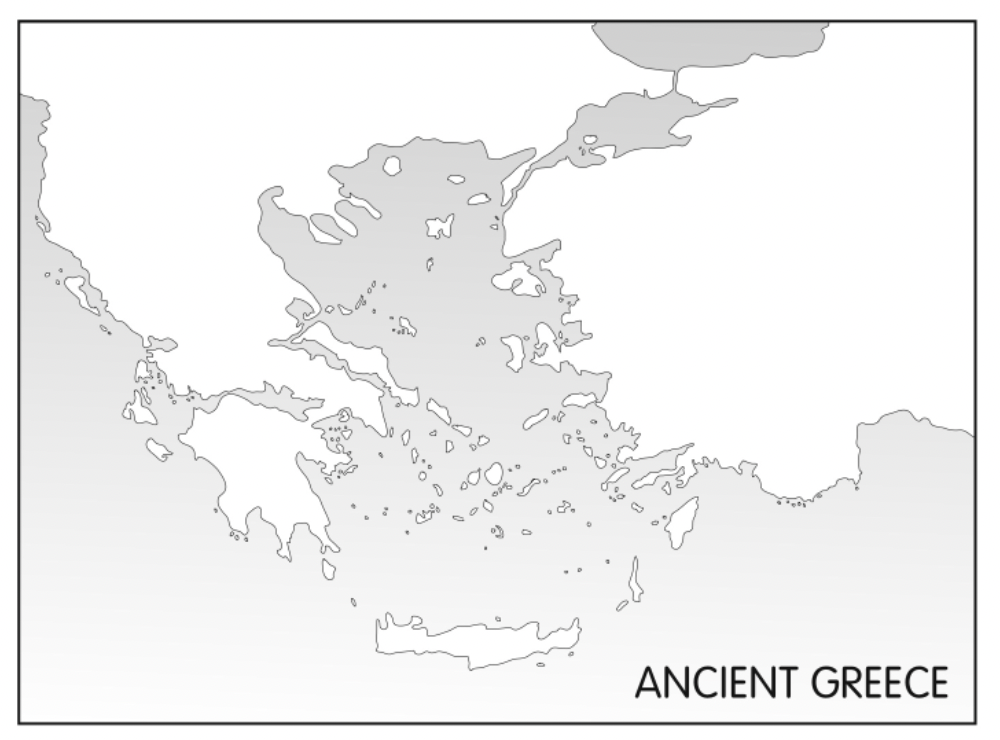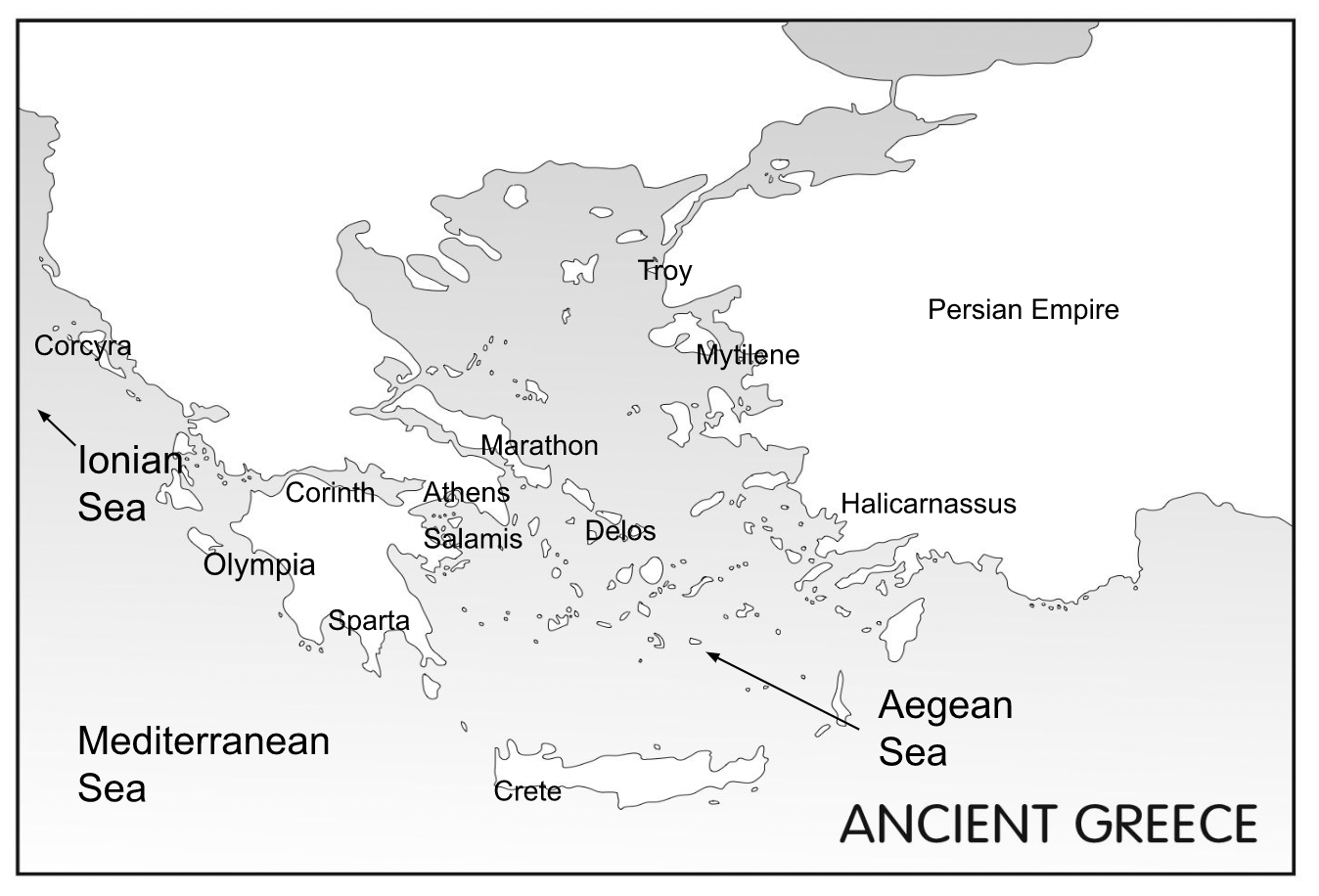Classical Studies - Unit 1
0.0(0)
0.0(0)
Card Sorting
1/7
Earn XP
Description and Tags
Study Analytics
Name | Mastery | Learn | Test | Matching | Spaced |
|---|
No study sessions yet.
8 Terms
1
New cards

label the map of Greece:
Athens
Sparta
Marathon
Persia
Halicarnassus
Delos
Salamis
Crete
Corinth
Olympia
Mediterranean Sea
Aegean
Troy
Ionian Sea
Mytilene (just near Lesbos)
Melian
Corcyra
Athens
Sparta
Marathon
Persia
Halicarnassus
Delos
Salamis
Crete
Corinth
Olympia
Mediterranean Sea
Aegean
Troy
Ionian Sea
Mytilene (just near Lesbos)
Melian
Corcyra

2
New cards
Who were the Minoans?
Inhabitants of the island of Crete from around 3000 to 1500 BCE
Most powerful city was Knossos, possibly the origin of Minos and the myth of Theseus and the Minotaur
A highly advanced ancient society, generally pacifist and opposed to war, with the people being craftsmen, farmers of olives, potters and jewelers
Most powerful city was Knossos, possibly the origin of Minos and the myth of Theseus and the Minotaur
A highly advanced ancient society, generally pacifist and opposed to war, with the people being craftsmen, farmers of olives, potters and jewelers
3
New cards
Who were the Mycenaeans?
Of Indo-European descent, mainly inhabited the mainland and the Peloponnese of early Ancient Greece
Most powerful city was Mycenae
A highly expansive and powerful in battle
Golden age of Mycenaean culture was between 1650 and 1200 BCE
Most powerful city was Mycenae
A highly expansive and powerful in battle
Golden age of Mycenaean culture was between 1650 and 1200 BCE
4
New cards
Fall of Minoan society
A volcanic eruption on the island of Thera around 1450-1500 BCE likely destroyed many important Minoan settlements on Crete. This vulnerability caused by the eruption and other natural disasters such as tsunamis likely made Minoans more susceptible to the conquering by the Mycenaeans that was occurring around the same time.
5
New cards
Mythological fall of Minos
Died in Sicily at the hands of the daughters of the King Cocalus while in pursuit of Daedalus (an inventor who was the father of Icarus and the creator of the Labyrinth). After his death, he became a judge of the Underworld under the rule of Hades.
6
New cards
Why are the Minoans important?
Many of the highly advanced Minoan practices, craft and art were adopted by the Mycenaeans after their invasion -- impacting the trajectory of Ancient Greece and its later revolutionary principles and philosophies
7
New cards
Minoan cities
Minoan architecture tended to be quite labyrinthine in structure, with palaces often of towering walls and corridors. Art has depicted Minoan windows to be scarlet and covered with oily sheets. It was structures like these that differed from the Mycenaeans and “overwhelmed” them. Knossos also had no city wall, unlike most ancient cities, as Minoans lived a peaceful existence and had no need for defensive fortifications, unlike the Mycenaeans who were highly imperialistic and expansive.
8
New cards
Significance of Athens (or Classical Greece) in ancient society
the first known democracy, in which citizens were largely able to “think and act for (themselves)”.
unlike most other ancient societies, which were governed by monarchies or strict religious doctrine, Classical Greece was a place of “radical democracy” and “effective freedom and opportunity”.
this atmosphere of relative liberty of thought allowed for the development of many revolutionary ideas in philosophy (movements such as Stoicism and Epicureanism are still popular thought systems today), art, literature, science and mathematics.
many of these cultural ideas and societal values were adopted by later Hellenistic societies.
unlike most other ancient societies, which were governed by monarchies or strict religious doctrine, Classical Greece was a place of “radical democracy” and “effective freedom and opportunity”.
this atmosphere of relative liberty of thought allowed for the development of many revolutionary ideas in philosophy (movements such as Stoicism and Epicureanism are still popular thought systems today), art, literature, science and mathematics.
many of these cultural ideas and societal values were adopted by later Hellenistic societies.